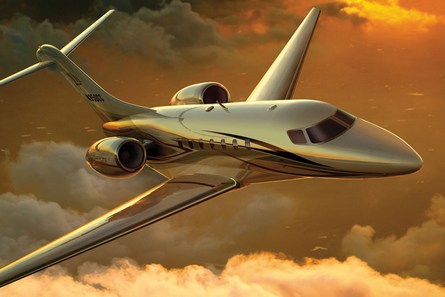Cessna's new Citation Columbus large business-jet is to have a unique hybrid fly-by-wire and mechanical flight control system developed by the aircraft manufacturer. The Columbus is to fly in 2011.
The hybrid system will combine the handling and stability enhancements possible using FBW with the simplicity and reliability of manually powered controls, says Cessna.
In the pitch and roll control axes, the aircraft will have split ailerons and elevators. One side of each surface will be manually actuated via mechanical linkages, the other hydraulically boosted with fly-by-wire signalling, says Rolf Anderson, engineering supervisor on the Columbus flight control system.

Cessna's $27 million Columbus is to enter service in 2013 © Cessna
The mechanically actuated surfaces will be sized to ensure the aircraft can be controlled manually if the fly-by-wire is lost. But in normal operation both sides will move simultaneously in response to pilot inputs, the manual surface doing most of the work while the FBW surface tailors handling and augments stability.
In size, the ailerons will be split about two-thirds/one-third between manual and FBW while the elevators will be split roughly in half, says Anderson. Cessna calls the pitch/roll control system SmartBoost, and has applied for a patent.
In the yaw axis, the Columbus' rudder will be split into two roughly equal parts, the upper section FBW-controlled and the lower section hydraulically boosted with mechanical reversion in an emergency. Cessna calls this system SmartPower.
Anderson says Cessna's hybrid approach allows a simplified, highly reliable mechanical control system to be combined with the benefits of fly-by-wire without the need for the high level of redundancy and monitoring required for full FBW.
"Our primary goal was to harmonise the flight controls, with nice feel and performance characteristics," he says. As it is not required for continued safe flight, the FBW system can be simpler, yet also be used for trimming, stability augmentation and autopilot functions.
Overall, Anderson says, the hybrid flight-control system reduces parts count, improves maintainability and lowers operating cost. Fly-by-wire helps with rigging the mechanical controls, which in turn reduce the need for complex FBW backup controls.
The company has been developing the system for the past year, he says, including extensive simulations, ground testing and flight tests in a modified Citation. Parker Aerospace has been selected to provide the powered flight control system.
Source: FlightGlobal.com



















